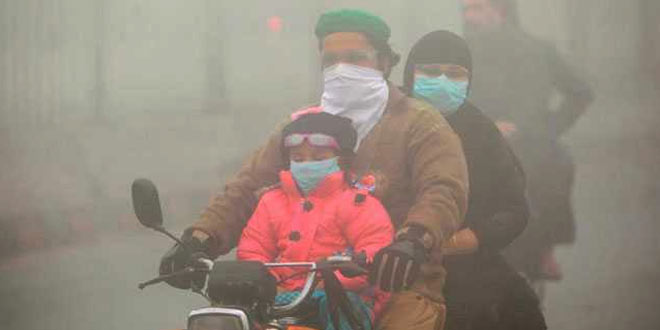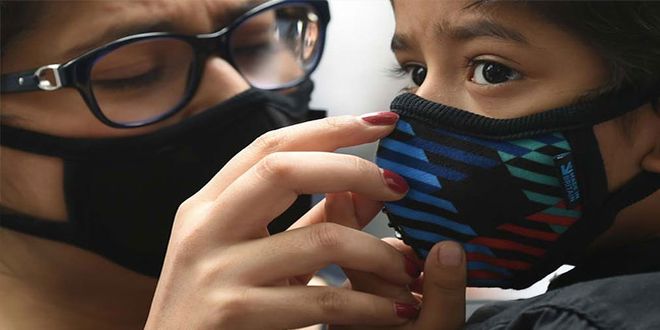Highlights
- 2.5 million people in India died early because of pollution in 2015: Lancet
- According to Brookings Institute, Delhi is the most polluted city in world
- India has become a threat to my health: Costa Rica’s ambassador
Mumbai: Namita Singh’s young daughter suffered from bronchitis when the family lived in the northern Indian city of Lucknow, where fumes from clogged traffic and a smoky haze every winter outweighed the charms of its Mughal architecture and famed cuisine. When her husband was transferred to the town of Dehradun, in the foothills of the Himalayas, her daughter recovered in the clean mountain air. So when her husband’s job took him to Delhi a couple of years later, the choice was clear: Singh and her daughter remained in Dehradun, while he moved to the capital.
As toxic smog enveloped Delhi and northern parts of India, forcing emergency measures, Ms. Singh said she was relieved not to be living there.
I cannot think of living in Delhi, with the pollution so bad, said Singh, whose husband visits every two weeks.
“My daughter is so much better here in the cleaner air. We cannot think of moving back to that pollution,” she told the Thomson Reuters Foundation.
Pollution levels climbed to 12 times above the recommended limit this week in New Delhi. Officials said they knew what was needed to control the haze, but nothing would be done, at least this year.
City pollution has triggered a reverse migration trend in India- from the city to the countryside.
While it is a mere trickle compared to the inexorable rural to urban flow, some high-profile moves have made the news in recent years, such as the departure of Costa Rica’s ambassador to southern India because Delhi’s air had made her sick.
At least 2.5 million people in India died early because of pollution in 2015, more than any other country in the world, according to a study by the Lancet Commission on Pollution and Health.
In New Delhi – now the most polluted city in the world, according to the Brookings Institute – illegal crop burning in areas near the capital, as well as vehicle exhaust and construction dust are blamed for the smog that descends in cooler weather every year.
The city, home to more than 20 million people, has become a “gas chamber”, Chief Minister Arvind Kejriwal said.
‘Hardship’ Posting
As sales of face masks rose and chatter about air purifiers filled internet chat rooms, others took more concrete action: they moved to smaller cities on the coast or the mountains.
The pollution did not even spare Delhi’s elite diplomatic corps. In a blog post gone viral, Mariela Cruz Alvarez, the Costa Rican ambassador, said she had developed a serious respiratory infection, and had moved to Karnataka in the south to recover.
Also Read: Delhi’s Toxic Air Forces Costa Rica Ambassador To Leave The City, Here’s Her ‘Smog Story’
India has become a threat to my health and the health of my friends and colleagues, Ms Alvarez wrote.
Local newspapers said several embassies have cut down on non-essential staff in Delhi, and moved some positions to neighbouring countries like Singapore.
Delhi may soon be considered a “hardship” posting because of the high levels of pollution, some missions said.
Prime Minister Narendra Modi’s Smart Cities Mission aims to modernise 100 cities by 2020 with high-speed internet, uninterrupted power and water supply, efficient public transport and living standards comparable to Europe.
But such efforts must include a long-term plan to control pollution, said Anumita Roy Chowdhury, executive director at research and advocacy group, Centre for Science and Environment.
Air pollution is a huge issue, but it is a myth that only big cities are polluted; pollution levels are rising in smaller cities, too. So where can you run away to? she said.
Our template for urbanisation needs changing.
Tens of thousands of people living in rural areas migrate to the cities every day, seeking better economic opportunities. Many end up in slums and informal settlements, and are particularly vulnerable to the pollution.
Some of those who can are heading in the opposite direction.
A popular anchor on a leading financial television network stepped down four years ago, and said he was moving to the mountain state of Uttarakhand for a cleaner, quieter life.
Even those who have recently moved to the cities are taking stock of their decisions.
Vinod Kumar, who moved from a village in southern Tamil Nadu to Chennai city to be a driver, said he planned to return to his village and take up organic farming on the family land.
It’s only now that I realise how lucky we were in the village to have clean air and clean water, and not be ill from pollution all the time, he said.
Also Read: Photo Feature On Delhi Smog: City’s Famous Landmarks In A Gas Chamber





























